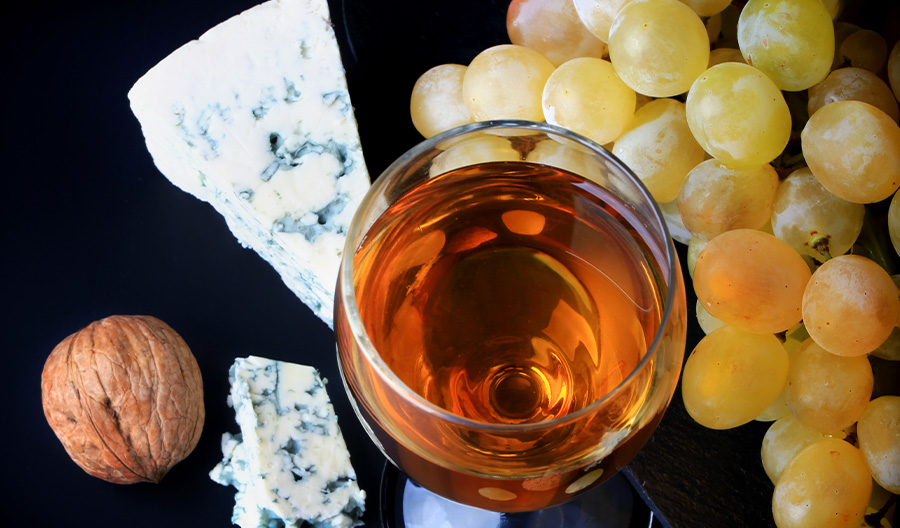It can be easy to confuse the two since many fortified wines—such as Port—can be sweet very much like dessert wines. Both, can also, sometimes just be enjoyed as dessert on their own. However, they are produced using two distinctly different winemaking techniques. Both can be very high in alcohol, regardless of how sweet they are. And bottom line for the Alcohol and Tobacco Tax and Trade Bureau, both categories end up having the same legal definition, as wines that clock in at 14 percent—or more—in alcohol by volume.
Fortified wine is made using additional alcohol: usually Brandy. These wines can be either dry or sweet, whereas dessert wines are always sweet. “The primary difference between dessert and fortified wines is that fortified wines have been strengthened, or fortified, with distilled grape spirit to increase the alcohol content,” shares Eric Hemer, senior vice president and director of wine education at Southern Glazer’s Wine & Spirits.
As these types of wines have been made long before there was refrigeration, fortified wine was produced “to protect the wine from oxidation and bacterial spoilage on long sea voyages,” explains Hemer.
The Different Types of Dessert Wines
These wines are always sweet and don’t usually contain added alcohol. A variety of production methods are used to make them. Some, such as late-harvest icons such as French Sauternes and Hungarian Tokaji, are sweet because the grapes used to produce them are left on the vine to allow their sugars to concentrate.
Some of these grapes are intentionally subjected to mold—called botrytis or Noble Rot—which shrivels up the grapes concentrating their honeyed and dried fruit flavors. German and Austrian ice wines are made like this.


Fortified Wine Styles
The most important fortified wines are Port, Sherry, Madeira and Marsala: all of which are sourced in very specific regions of their home countries of Portugal, Spain and Italy. They are referred to as liqueur wines by the European Union. They all have alcohol added to them at some point in their production: and this may happen before—or after—fermentation designating whether they emerge sweet or dry.
When the additional alcohol is combined with the spirit during fermentation, the final wines will be sweet as its addition stops the fermentation leaving unfermented sugar in the wine. If the wine is fortified after fermentation—when all the sugar has been converted to alcohol—the wines will generally be dry.
Port and Sherry, from the Porto region of Portugal and the Jerez area of Spain respectively, are the two best-known fortified wines. The most important types of Port start with the less expensive ruby and tawny and lead into range of different vintage bottlings that can age for 20 years or more. While the majority of Sherry production is dry—such Fino and Manzanilla—there are other sweeter styles.

